The ancient Olympian games had a lot of influence on ideas that Westerners have considered to be the bases of nature and thought.
How did beefcake become brain? Sprint through the starting gate and find out.
Here are a few facts about the ancinet games:
1. Local aristocrats had organized contests in Olympia since the 8th century BCE. Competitors soon came from more distant places.
2. Between 582 and 573 BCE, three new international athletic festivals were established. The Pythian Games began at Delphi (in the above photograph). The Nemean Games started at Cleonae, and the Isthmian games began near Corinth. So by the early 6th century, international sporting events became pan-Greek. The Greek world was a patchwork of independent city-states until the 4th century BCE, so these festivals became one of the main ways that Greeks shared experiences and developed a common identity.
3. Athletes first competed with their aristocratic peers for glory. But by the early 6th century, they represented their home towns. The whole city now rooted for its heroes.
How did these trends help shape Western thought?
1. The playing field became an especially meaningful place that Greeks shared. This happened as the Agora became central in people’s lives. In the 5th and 4th centuries, the theater was established as another key center of the community. All 3 places had common traits that reinforced each other in Greeks’ ideas about the world. All were open fields in which all people were within clear sight of each other. Instead of the murky Southeast Asian jungles, the vast lands Indians lived in, and the central Chinese palace, the most meaningful places for Greeks were human-scale. And they permitted the eye to scan the whole venue.
And all those eyeballs saw the same things. Nothing’s mysterious, or visible only to priests in trances and sporting weird clothes. The world is fathomable and rational.
2. What they saw was agon (contest/confrontation) between 2 people (wrestlers, boxers) or a few (racers and javelin and discus throwers). They focused on distinct entities, rather than general flows of energy, like in Thai cultures. Relationships between visible objects became the main focus, rather than big cosmic frameworks, like in India.
3. Athletes competed in their birthday suits. Greek sculpture developed at the same time that the games did, and the male nude was seen as the height of beauty. It represented the perfect distinct entity–strong, independent, and in control of itself. Greek temples embodied the same values, and they emerged as the Olympian games became more popular.
Thai sculpture portrays the body as a smooth flow of graceful energy–no sharp definitions, so no muscles. But Greek sculptures helped train the eye to see the body as distinct components, and to linger over details.
Experiences that people shared in all these venues–the athletic games, the Agora, the theater and the sea–reinforced each other as the most basic aspects of reality and thought:
1. Distinct entities and their components.
2. Linear relationships between distinct things.
3. Visual clarity.
4. Proportion.
Ideas that you structure the world with have infinite dimensions–billions of interactions between people within their natural environment make them seem most basic. A cool thing about cultural studies is, what seems obvious at first is infinitely deep. There’s a whole world in that beefcake to explore.

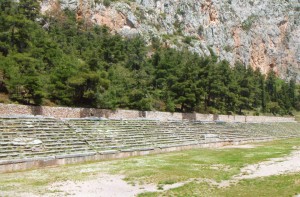
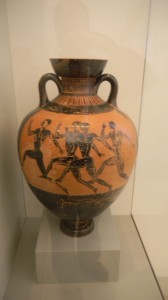
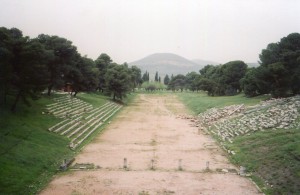
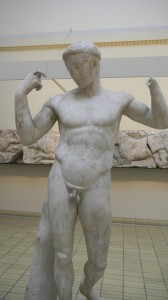
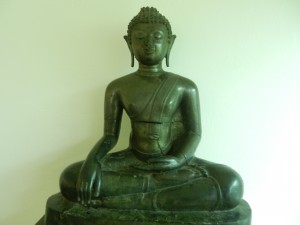
Comments on this entry are closed.